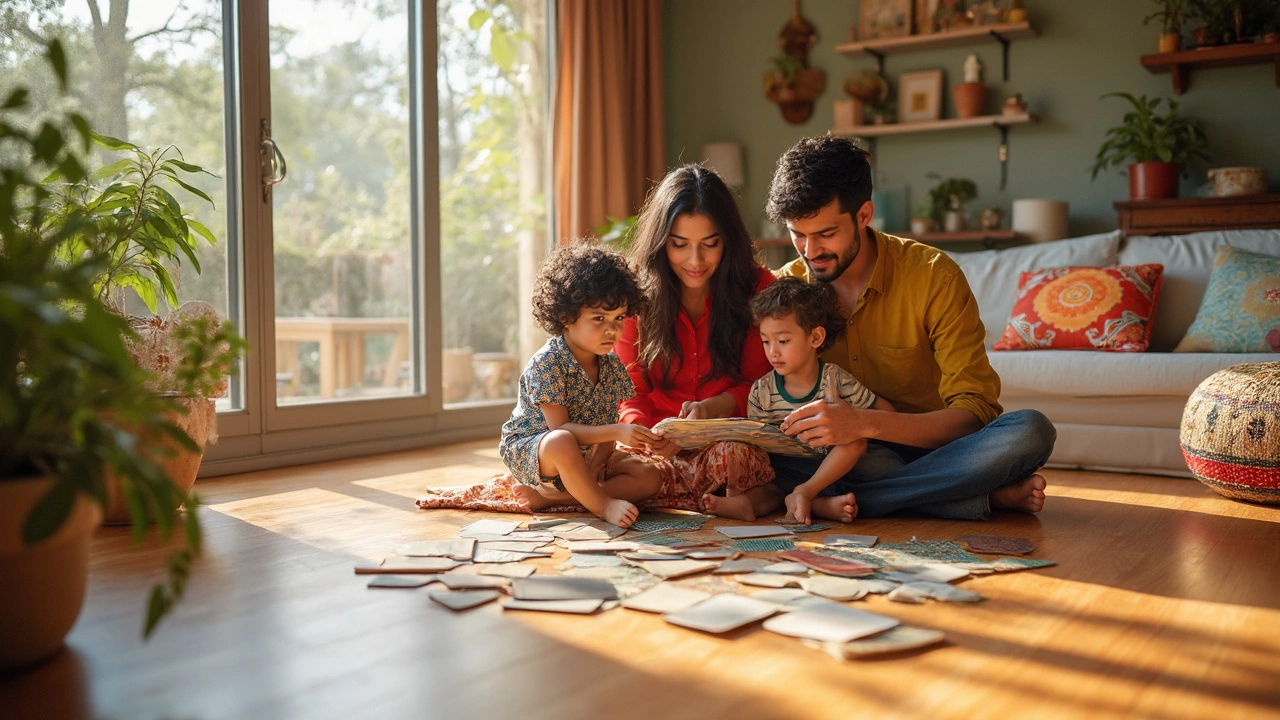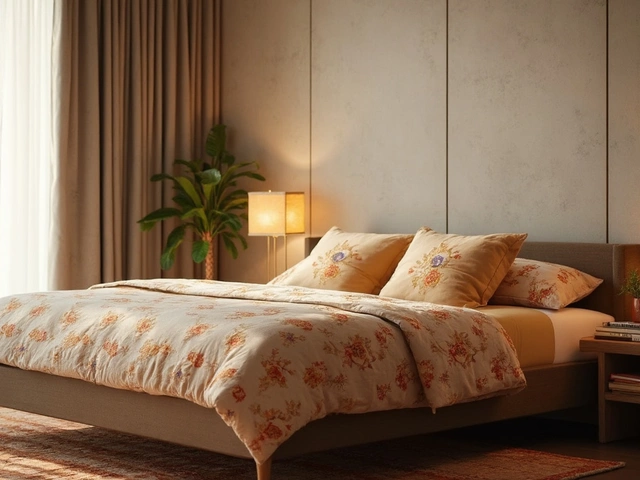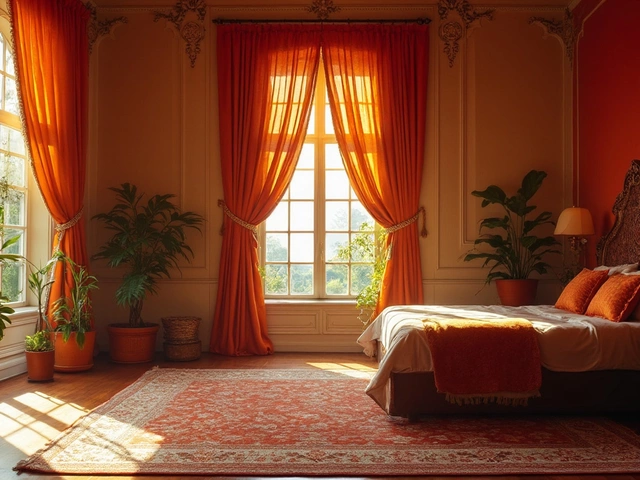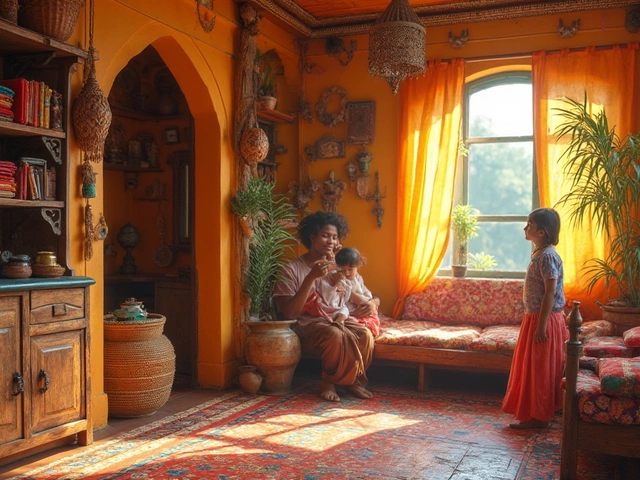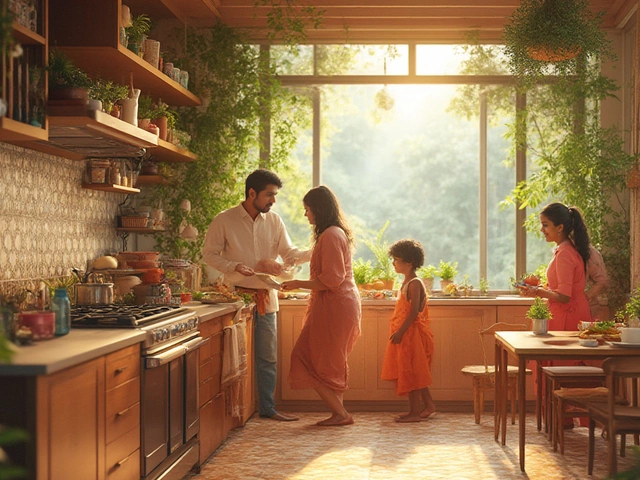Hardwood floors are classic, but let’s be honest—they can eat up your renovation budget and don’t always handle spills or scratches from kids and pets. If you love the warm, natural look but want something tougher (or just cheaper), you’ve got more choices than ever.
Today’s alternatives nail the look of real wood while saving you a bunch of headaches. Laminate, vinyl plank, engineered wood, and even tile or bamboo can handle muddy shoes, kitchen accidents, and wild dog zoomies way better than old-school hardwood. And when you’re busy chasing kids like Cormac around the house, every bit of durability helps.
It’s not just about cost, either. Installers these days have tricks to make fake wood floors look so close to the real thing that your friends probably won’t notice. Some of these options even come with waterproof features and easy-clean finishes, which means you’ll spend less time stressing about damage and more time actually living in your space.
- Why Swap Out Hardwood? The Real Reasons
- Laminate: Durable and Budget-Friendly
- Luxury Vinyl Plank: Looks Real, Handles Messes
- Engineered Wood: Real Wood Without the Worry
- Tile and Bamboo: Unique Choices Worth a Look
Why Swap Out Hardwood? The Real Reasons
People love the look of hardwood, but the reality behind the shine and grain isn’t always pretty. First off, solid wood floors are expensive. According to the National Association of Home Builders, the average cost for installed mid-range hardwood is around $8 to $15 per square foot—and that’s just the beginning. Refinishing or replacing warped or scratched boards can add hundreds of dollars more down the road.
Hardwood can also be a headache for active families, pet owners, or anyone with lots of foot traffic. It scratches from dog nails, stains from spilled juice, and warps if you live somewhere with humidity swings or lots of spills. My own son, Cormac, managed to leave a soccer cleat print on our living room’s oak—so trust me, these things happen fast. Water is a real enemy too. One kitchen leak or a toppled mop bucket, and you’re looking at swelling or boards that never quite look the same.
If you’ve got allergies, real wood isn’t always the hero. Some finishes off-gas VOCs (those chemical smells that linger for weeks). Plus, regular cleaning can be tricky because too much water is a no-go and even special sprays can mess with the finish.
- hardwood floor alternatives offer more water resistance, making spills a non-event.
- They’re usually cheaper and faster to install, especially click-lock types you can DIY.
- Maintenance is easier: no refinishing every few years or fussing over small dents.
- Some options are eco-friendlier, made from recycled or renewable materials.
Check out how common flooring choices stack up for the stuff that matters most:
| Flooring Type | Avg. Cost (per sq ft) | Water Resistance | Scratch Resistance | Maintenance |
|---|---|---|---|---|
| Hardwood | $8–$15 | Low | Medium | Medium–High |
| Laminate | $2–$6 | Medium | High | Low |
| Luxury Vinyl Plank | $2–$7 | High | High | Low |
| Engineered Wood | $4–$10 | Medium | Medium–High | Medium |
With rising material costs and families needing floors that can actually handle daily life, the case against traditional hardwood gets clearer every year. Swapping it out or skipping it at the start can easily mean more money in your pocket and less stress when big messes happen.
Laminate: Durable and Budget-Friendly
If you want that wood look but your wallet says otherwise, laminate flooring is a go-to. Laminate has been a top pick for decades because it’s built to handle every day messes and doesn’t freak out if juice hits the floor. Forget the fake plasticky stuff from the early 2000s—today’s laminate planks actually mimic hardwood really well, right down to the texture.
What sets laminate apart is its layered design. The top layer is a tough, clear wear surface that resists scratches and stains. Underneath, there’s a high-res image layer (this is what makes it copy wood so well), then fiberboard for strength, and finally a backing layer that blocks moisture. Some brands, like Pergo or Mohawk, even offer water-resistant lines that survive the occasional kitchen spill or muddy boots.
Here’s why so many people (including busy families) go with laminate instead of solid hardwood:
- It costs way less—typically $2 to $4 a square foot compared to $8 or more for real hardwood.
- Easy to install. Most options click together, which means you can DIY and skip extra labor costs.
- No fussy maintenance. You can sweep, vacuum, or mop (with a damp—not wet—cloth) and be done.
- It resists dents and scratches better than soft hardwood, so it’s perfect for high-traffic areas or rooms where kids and pets play.
If you’re curious how laminate stacks up next to its pricier cousin, check these numbers:
| Feature | Laminate | Hardwood |
|---|---|---|
| Average Cost (per sq ft) | $2–$4 | $8–$15 |
| Water Resistance | Medium (some High) | Low |
| Scratch Resistance | High | Medium |
| DIY Friendly | Yes | No |
If you’re after hardwood floor alternatives that’ll last and keep your finances intact, laminate should top your checklist. The only catch is, while it’s tough, dragging furniture without pads or soaking the floor regularly can still mess things up. But for the price and hassle-free cleaning, it’s tough to beat.
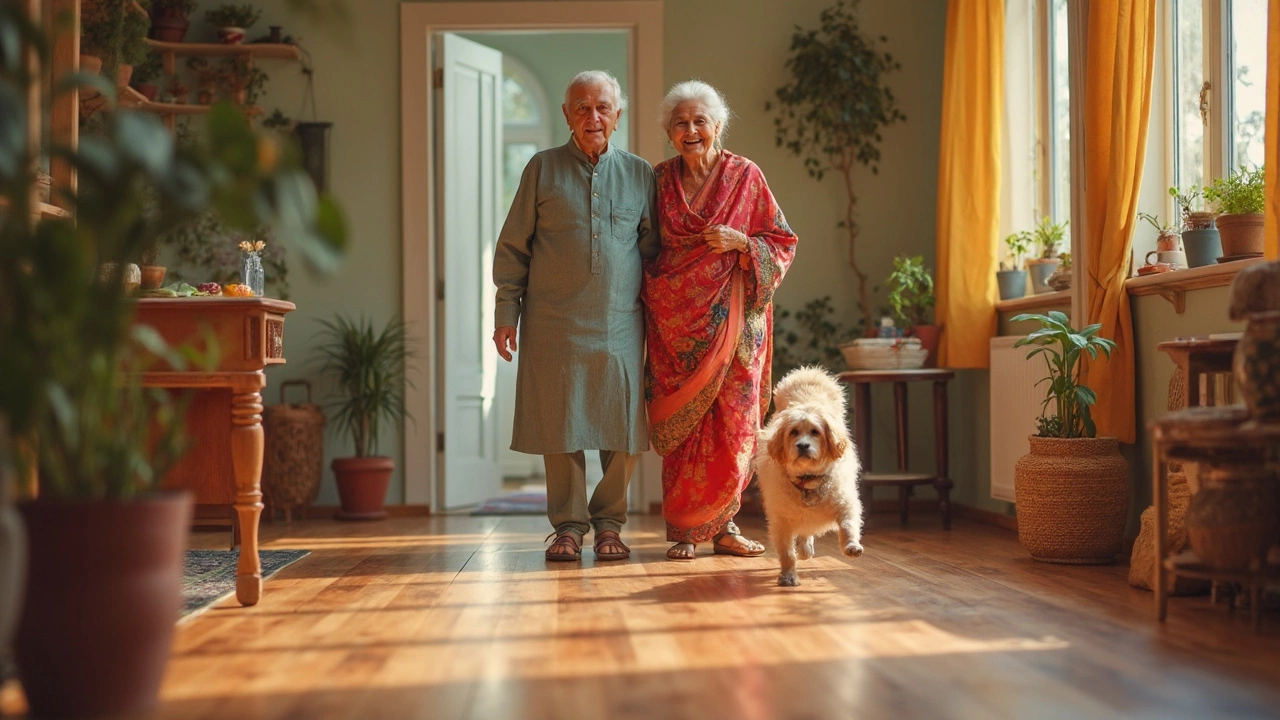
Luxury Vinyl Plank: Looks Real, Handles Messes
This one is a real game changer. Luxury vinyl plank flooring (LVP) checks all the practical boxes if you want the appearance of real wood but need something that’ll survive busy homes, pets, and kitchen spills. LVP is built with layers, making it waterproof and tough as nails—but it still looks shockingly close to hardwood. Walk on it in your socks, and odds are, you won’t know the difference until you tap it or try to scratch it. Kids like Cormac can run toy trucks across it without wrecking the floor.
One cool fact: Vinyl plank flooring’s top layer is designed with photographic prints of real wood, so every plank gets a natural look with grain and knots—some even have textured surfaces to mimic the real stuff. Most isn’t just water-resistant, it’s actually waterproof. It’s a go-to for bathrooms, basements, and kitchens—all those places hardwood would have a meltdown.
“Luxury vinyl plank is the fastest growing category in the flooring industry. Its balance of realism, resilience, and affordability make it a popular choice for modern homes.” – National Wood Flooring Association
If you’re worried about installation, don’t be. LVP often clicks together with a tongue & groove system, so you can lay it right over most existing floors. No nails, no glue, no nightmare mess.
- Comes in endless styles: rustic, coastal, classic oak, you name it.
- Handles spills, muddy shoes, and pet accidents without a fuss.
- Warm and softer underfoot than tile.
- Easy to replace one plank if it gets damaged—no need to rip up the whole floor.
- Lower price than real hardwood but looks just as good from across the room.
Here’s how LVP stacks up against hardwood in key areas:
| Feature | Luxury Vinyl Plank | Traditional Hardwood |
|---|---|---|
| Waterproof | Yes | No |
| Scratch Resistance | High | Medium |
| Plank Cost (per sq. foot) | $2–$5 | $8–$15 |
| Maintenance | Easy—sweep and mop | Needs special products |
| Looks Like Real Wood? | Very Close | It IS real wood |
If you want something that pulls off the “real wood” vibe without the stress, luxury vinyl plank is tough to beat. You get all of the style, way less of the worry.
Engineered Wood: Real Wood Without the Worry
Engineered wood is a big deal for people who want that classic hardwood look but don’t want to deal with scratches, warping, or giant repair bills. This option is made with a real hardwood veneer on top and several layers of plywood underneath. The result? It handles moisture, temperature swings, and daily wear much better than solid hardwood.
One thing that makes engineered wood stand out is how stable it is. Because of its layered build, it doesn’t shrink or swell like solid wood. That means less cracking and fewer gaps over the years, even if you live somewhere with hot summers and freezing winters.
Let’s get practical: engineered wood planks can be installed almost anywhere inside your house. Unlike solid wood, which hates humidity and basements, engineered wood works great over concrete and in lower levels. Some types even let you go with a floating floor system—no nails or glue, just click the boards together and you’re good.
Most brands come pre-finished, which means the tough top layer is already sealed and ready for action. You don’t need to sand or stain anything at home (and you avoid a house full of dust and fumes). Just sweep, mop with a damp cloth, and you’re set. If you snag a good deal during a sale, you can get engineered wood for less than what premium hardwood costs. It’s definitely worth checking out if the classic look is a must-have, but you want lower maintenance.
- Looks and feels like real wood, since it actually is on the surface
- Resists moisture and temperature changes better than solid hardwood
- Works with modern easy-install methods (like click-lock)
- Less likely than hardwood to show scratches and dents from busy homes
- Most planks can be refinished once if needed, depending on the thickness of the veneer
If you’re picking flooring for a high-traffic spot or a home with kids or pets, engineered wood is hands-down one of the best hardwood floor alternatives out there. You get the look, without all the worry.

Tile and Bamboo: Unique Choices Worth a Look
If you want your floors to stand out from just another fake wood job, ceramic tile and bamboo are worth checking out. Both have their quirks, but they can offer some pretty smart perks, especially for kitchens, bathrooms, and entryways.
Tile comes in two main types: ceramic and porcelain. It’s super tough, almost waterproof, and doesn’t care about muddy boots or dropped juice boxes. Porcelain tile is even harder and less porous than regular ceramic—which is why it’s used in places where floors take a daily beating. The cool thing is, some tiles these days are made to look just like wood planks, so you can snag that cozy vibe without the upkeep.
A lot of people don’t realize how many styles tile comes in now. You can get big planks, herringbone patterns, or classic squares. Grout has gotten way better too; stain-resistant colors mean less scrubbing. But a tile floor can feel cold underfoot, and if you drop a dish, say goodbye—it will shatter. Still, if durability and easy-cleaning top your list, tile’s a winner.
Bamboo is the dark horse of wood-look floors. Even though it’s a grass, not a real wood, the finished planks are super hard—often harder than some traditional hardwoods. Engineered bamboo is processed to resist swelling, shrinking, and scratching, and you can get it in natural tones or rich, stained colors. Plus, bamboo regrows way faster than hardwood trees, so you can feel a bit better about your environmental footprint.
| Floor Type | Water Resistance | Durability | Average Cost (per sq. ft.) | Eco-Friendly |
|---|---|---|---|---|
| Ceramic/Porcelain Tile | Yes | Very High | $3 – $10 | Medium |
| Bamboo | Moderate | High | $3 – $8 | High |
When comparing hardwood floor alternatives like tile and bamboo, consider your room’s use. Both can add a modern twist without going full-on traditional. If you want heated floors (highly recommended for tile), check that your subfloor fits the bill. Always keep a few extra planks or tiles: kid accidents and pet claws happen, and it’s easier to swap in a fresh piece than start over. Bottom line? If you crave that extra punch—something people haven’t seen a million times—don’t sleep on tile and bamboo.
